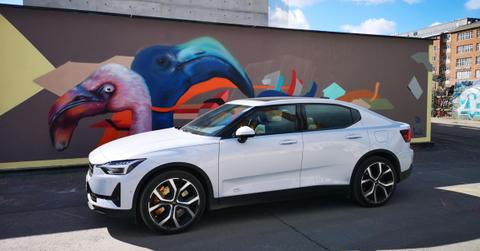GGPI Stock Forecast: ‘Rivian Effect’ in Play Before Polestar Merger
GGPI will merge with Polestar in 2022. What’s the forecast for GGPI stock? Can it run higher amid the "Rivian effect?"
Nov. 15 2021, Published 6:16 a.m. ET
EV startup Rivian had a stellar listing and its market cap soared above $100 billion. We’ve seen traction in other EV names and Gores Guggenheim (GGPI) has also moved higher. The SPAC will merge with Volvo-backed Polestar. What’s the forecast for GGPI stock and can it run even higher amid the "Rivian effect?"
While EV stocks have mainly looked weak in 2021 after the rally at the beginning of the year faded away, we’ve seen increased momentum over the last month. Tesla’s market cap soared above $1 trillion, which made it the first automaker to achieve that feat.
GGPI-Polestar merger details
Polestar isn't the only EV company that has opted for a SPAC reverse merger to go public. In 2020, several EV companies including Lordstown, Nikola, Fisker, and Canoo opted for a SPAC merger. Lucid Motors went public through a merger with Churchill Capital IV (CCIV) and it was the most hyped merger of 2021.
The deal with GGPI valued Polestar at an equity value of $21.3 billion. Polestar would get over $1 billion cash from the merger, which includes $800 million from the SPAC trust account and another $250 million from PIPE investors. Counting on the cash in SPAC trust has been risky. In many SPACs, the majority have opted for a redemption. However, if GGPI sustains above the $10 price level, mass redemptions wouldn’t happen.
Polestar stock forecast
Unlike Lucid Motors and Rivian, both of which have only recently started delivering cars, Polestar has been producing cars. The company has two models in production and expects to add more models.
Polestar expects to post revenues of $1.6 billion in 2021, which is expected to rise to $17.8 billion by 2025. We don’t have the projected numbers for Rivian since the company went public through a traditional IPO and can't provide forward projections.
This regulatory arbitrage enables companies going public through SPAC mergers to provide forward projections, which stretch up to 10 years at times. However, in some cases, the valuations look too rosy and we’ve seen companies revise down their guidance for the very first year only. An example is Paysafe, which merged with a SPAC sponsored by Bill Foley.
While we don’t have any reason to cast doubt on Polestar’s projections, they should always be read with a pinch of salt.
Will GGPI rise from these levels?
The valuations in the EV industry have been working on a derivative and validation model. If Rivian is correctly valued at $100 billion, Polestar would appear cheap with its current pro forma equity value of around $27 billion. The company is backed by a reputed group like Volvo, which lowers the execution risk.
Polestar is focusing on global markets. In contrast, some of the other EV names are currently focusing on a particular geography. Companies like Lucid Motors and Rivian are targeting the U.S. market first, while Chinese EV companies like NIO and Xpeng are mainly focusing on the domestic Chinese markets. While both NIO and Xpeng are expanding in Europe beginning with Norway, China accounts for most of their revenues.
As for Polestar, it's already in the production phase. The valuations also look reasonable compared to fellow EV companies. Looking at the current momentum in EV names, GGPI should continue to move higher from these price levels.



